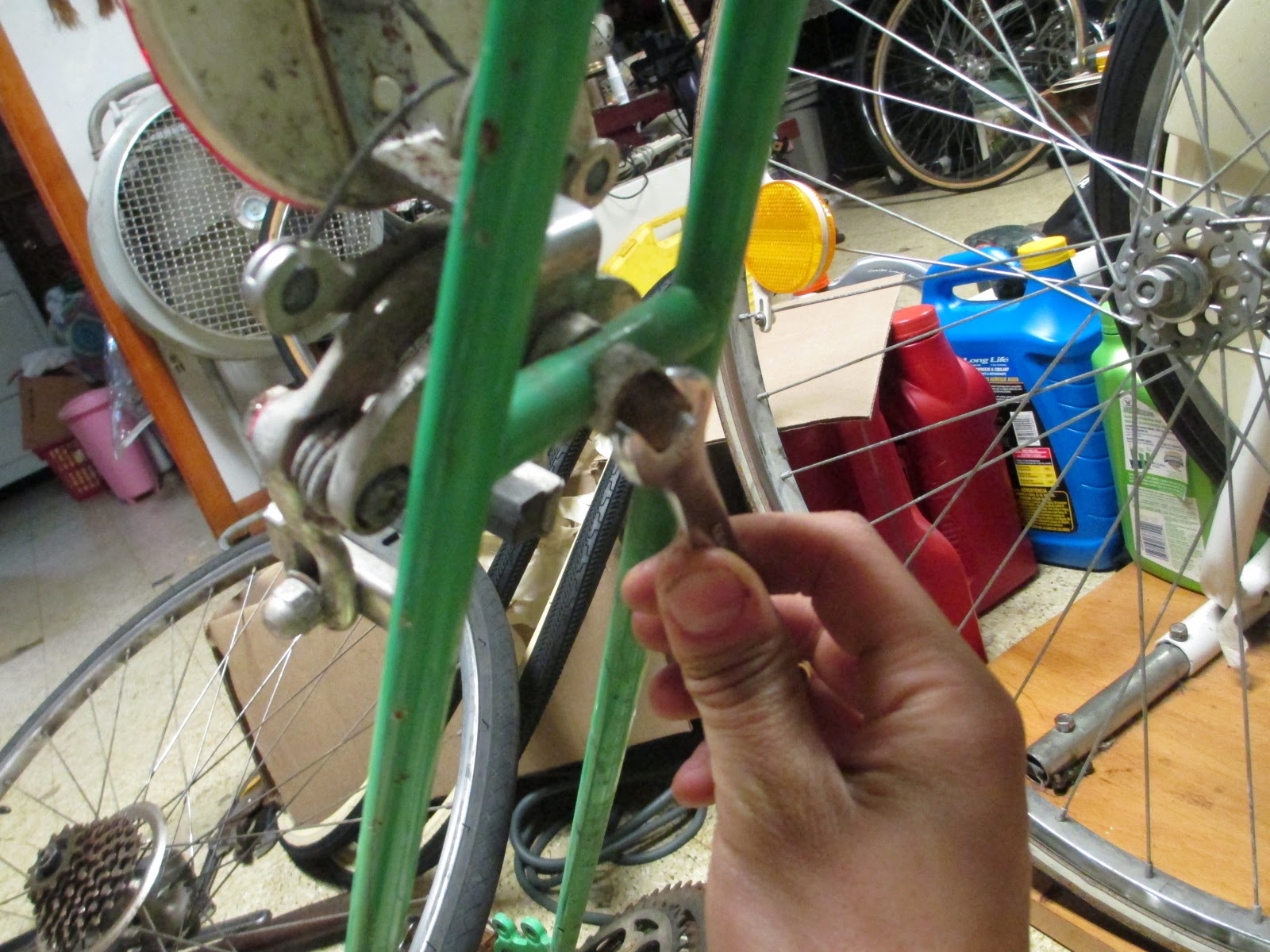I bought a used 8 speed Shimano XTR derailleur, and I thought it might be useful if I showed how to take one of these apart for cleaning. This one is an M910, but I would imagine this procedure would also apply to the original M900 models too. First the easy stuff.
Remove both pulley bolts with a 3mm Allen key:
Now unscrew the cage stop with a #2 Philips screwdriver, and carefully let the spring unwind:
With the guide pulley out of the way, you can loosen the bolt that holds the pulley cage together:
You should be able to separate the cage from the derailleur. Keep track of all the little pieces, especially the little metal ring that sits over the end of the bolt:
Now we'll take apart the B knuckle. First stick a small flat screwdriver inside the c-clip and twist:
With the c-clip removed, you can wiggle the backing plate off:
Here is the derailleur taken apart now. Make sure to clean everything well:
Grease the barrel of the pulley cage bolt before reassembly:
Now slide the bolt back through the cage plate, and add the dust guard, spring, and metal ring. Pick one of the 2 holes for the spring to sit in. The hole that's further clockwise is the default setting, the other is the high tension setting:
I ended up using the normal setting for less chain drag (because race bike). Now you can slide the spring back into the knuckle. It's important that the other end of the spring fits in the hole that's inside the knuckle, so it can be a bit tricky to line everything up. Once it's back together, tighten the bolt:
Now wind the cage back and reinstall the stop screw:
Pack the empty knuckle with grease and reinstall the spring. Again, the spring needs to align with the hole in the knuckle:
Grease up the bolt and place the dust guard and backing plate back over the spring:
Here is the toughest part. With a set of pliers nearby, twist the backing plate until the tab lines up behind the stop on the knuckle. Here I used a small screwdriver against the bolt for leverage:
Use the pliers to press the backing plate against the knuckle while the plate is rotated behind the stop. Once they're together, use the pliers again to reinstall the c-clip to lock the assembly together:
Now you can reinstall the pulleys. This one has a weird aluminum aftermarket pulley, but even the stock ones have tiny cartridge bearings inside so there aren't any bushings to clean. You can still drip some oil around the bearing seals to keep them spinning easily.
Once you tighten the pulley bolts you're all done. This derailleur isn't really much different than the cheaper ones, but even after 20 years of use (and some likely abuse) this one has zero play in the pivot points. I guess that says something about the quality that went into this thing.














































